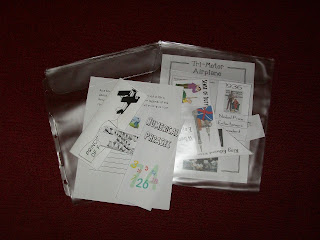Don't forget to participate!
I'd love to see what you have
chosen for your family!
Wow! It's already time to join the Not Back to School Blog Hop for this year! Frankly, we had a late ending to last year (uh-literally just finished the second week of July) so gearing back up at this point is almost too painful to contemplate! But hey, thanks for stopping by! If you are new to my blog I wanted to give you the 411 on us. We have been homeschooling for over 20 years and have graduated our first three [yep, we homeschooled high school too] and are currently winding down our adventures with our fourth child, who is at the 6/7th grade level.
We follow mostly a Charlotte Mason//Literature (with a tad of Montessori in there) method so our choices reflect those styles but we are also eclectic, so there are plenty of other little things thrown in for variety.
**I linked to where you can find out more about each product, but unless it is an Amazon link-I have no affiliation with the companies. I just really like their stuff and thought I would share the best place I have found to get them. My best advice for anyone (especially newbies) is to buy used first, reserving new purchases for materials you cannot find that way. Workbooks and any test booklets, etc. usually fall into that second category. Two great places for used books are Homeschool Classifieds and the Vegsource Homeschool site.
2014 Curriculum Choices:
ART/MUSIC Study:
We will study: van Gogh and maybe Seurat if we have time
no musician chosen yet
BIBLE:
images from rainbowresource.com
I will either restart the God's Great Covenant Series: Book 1 NT I bought last year or get the second book in the Apologia series: Who Am I? I dunno yet. I am still trying to figure out this subject. Again-I barely finished last year, so I haven't had time to contemplate it all and I had to put the God's Great Covenant series aside as it was just too much for him last year. This is on my "to figure out" list.HISTORY:
Image from Sonlight.com
LANGUAGE ARTS/READING/SPELLING:
Our boy is dyslexic so he's a bit behind in the language/reading skills, so that is why some of this seems a bit lower than it should be for his age. But that is the beauty of homeschooling-you tailor the education to the child not the other way around.
Learning Language Arts Through Literature Tan Book for the main backbone. A few times per week we do the Phonics Road to Spelling and Reading Level 2 that we started early last spring. I got this used at half price through homeschoolclassifieds. We are also reviewing the All About Spelling materials I have just as an added boost. The LLATL has some spelling but dyslexics struggle with that so I try a bunch of different things to work through this subject with him. I will have to do a separate post on that.
Winston Grammar: level 1. I ran out of time to do this last year with him, so this year we'll get moving on this.
Literature books for history, those assigned from LLATL and misc. stories cover his reading. I have this from previous students, so I only need the workbook. I also have the second level so if he flies thru this, we'll do that as well.
Handwriting is easy-he's just finishing his last Italic HW book he started in the late spring.
images from rainbowresource.com
Geography:
image from Rainbowresource.com
MATH:
image from rainbowresource.com
SCIENCE:
This is a new study for us and we're pretty excited about it.
I am going to throw in a bunch of various hands-on stuff to really make this a fun study. I have been picking up a few things from the dollar store, gathering goodies I already have about the home and will probably buy a kit or two like these: Dig! Discovery Kit: Maya Temple and Dig! Discover Kit: Easter Island
archaeology/geology image from rainbowresource; kits images from amazon.com
FOREIGN LANGUAGE:
images from rainbowreasource.com
Well that about covers it! Thanks for stopping by and I hope I helped you find some neat things to use for your homeschool curriculum!







































